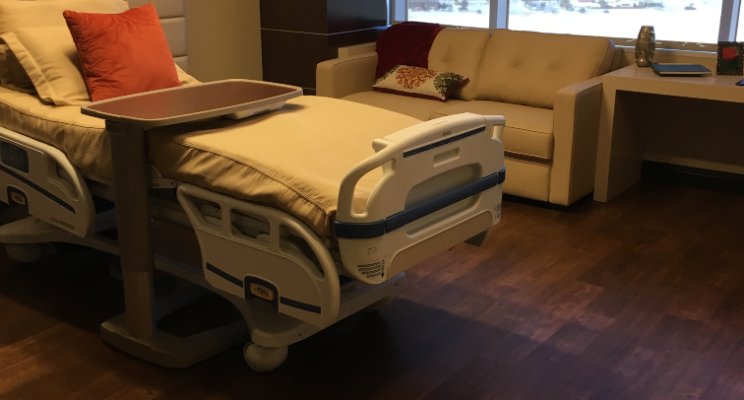by: Alan M. Preston, MHA, Sc.D.
Hospitals have been buying up physician practices at a rapid pace and much has been made about whether this might improve the quality of care. Of course, improvement of quality of care assumes the objective for a hospital to purchase a physician practice is indeed about quality and not financial performance. There is nothing wrong for a hospital to improve financial performance as an objective either. Nevertheless, there’s good reason why a recent study failed to find a connection between an employment model and better patient outcomes.
In the recent article that appeared in LinkedIn from the recent Annals of Internal Medicine study, which found that hospitals that switched to having physicians on staff didn’t see an improvement in quality outcomes. (http://annals.org/mobile/article.aspx?articleid=2552987) entitled; “Changes in Hospital–Physician Affiliations in U.S. Hospitals and Their Effect on Quality of Care”.The authors come to the conclusion that the quality of care based on mortality, 30-day readmission rates, length of stay and patient satisfaction did not improve when hiring doctors. The study’s findings suggest that physician employment alone probably is not a sufficient tool for improving hospital care. What is the take away from this article?
The most obvious issue with the study is when these hospitals were measured looking at the four domains mentioned supra, they measured employed and unemployed physicians that admit patients to the hospital. Some of the hospitals employed a lot of physicians and some employed few. Nevertheless, all hospitals still rely upon non-employed doctors to admit patients to their institution. And the non-employed mayhave skewed any results to measure the impact on employed physicians relating to the four domains of “quality”.
This brings me to the next point. There may have been more compelling reasons for a hospital to purchase a physician practice that involved other factors in addition to quality. Could it be that one motivation in the purchase of a physician practice might involve predictable revenue and in some cases higher revenue due to certain rules set by CMS that allow the hospital to bill both a “facility” component and well as a “professional” component when the hospital “owns” a physician practice? The simple answer is YES! And when I hear claims that hospitals are committed to reducing the cost of care, I am confused by such comments. Your healthcare costs are the hospitals and other providers’ revenue. Thus, for them to reduce costs, they have to agree to reduce their revenue which appears to at odds with most healthcare institutions. When was the last time you heard a healthcare provider suggest they wanted to limit their revenue?
As a matter of fact, many patients have felt the effect of such billing practices. Those patients that have received certain services in a doctor’s office that are now billed as a facility charge are paying more out of pocket when they have high deductibles. Again, your additional costs represent additional revenue for the hospital. Obamacare has had a dramatic shift on consumer’s insurance products which has dramatically increased a patients’ deductible. Thus, for the first $5,000.00 or $10,000.00, due to a healthcare provider, many patients have to first satisfy that amount out of pocket before their insurance kicks in and starts reimbursing the physician or hospital.
The trend has been for physicians to sell their practices to hospitals or physician practice management companies. The main reason we are witnessing this trend is due to the increased regulatory burden physicians have to comply with. Physicians spent a lot of time in school to learn about the practice of medicine; not how to comply with a plethora of rules and regulations. Every year, thousands of pages of rules and regulations are created which has had a chilling effect on physicians and many physicians decide to sell their practice and let someone else comply with the avalanche of regulation.
When a doctor goes from an independent doctor to an employed doctor, his/her practice patterns do not change overnight. They still practice medicine the way they have been doing for years. Just because a hospital purchases their practice, it should be no surprise that there is not a huge shift in quality of care. If the hospital wants to effectuate the quality of care, the hospital will have to convince the doctor to make some modification that results in improved care. Habits are hard to break. Convincing physicians to change their practice patterns is not an easy objective to accomplish.
If the healthcare community is looking for improved quality of care as a result of purchasing physician practices, they will need a lot of patience. It will take a major shift on the part of the hospitals, physician, and the patient, all acting in concert toward the achievement of a better outcome. We are witnessing some improvement in patient outcomes from the private Medicare Advantage plans when the insurance companies align payment with the improvement of quality. And since the health plans are paid more from CMS when the STAR ratings are improved, many health plans are offering financial incentives to physician practices to achieve better patient outcomes. Money is often a huge motivator in changing behavior patterns. Value based payment systems (The Medicare Access and CHIP Re-authorization Act of 2015 (MACRA) is an example that CMS is launching) are taking hold and physicians will see more and more of their incomes based on good patient outcomes regardless if they are employed by hospitals or not.
When the managed care companies share in the savings achieved in managing a population of patients with the doctors that help achieve improved patient outcomes, then quality of care can be improved. Doctors are already busy just attempting to manage the patients that show up every day at their office. Managing a population of patients requires reaching out to the patients that do NOT show up for a schedule visit. Follow-up and follow-through are tantamount for an individual physician to improve the outcome of the patient. Thus, it requires a tremendous amount of administrative support to achieve such. Many independent physicians have sought assistance from Independent Practice Associations (IPAs) or sold their practice to hospitals in an effort to manage the regulatory and administrative aspects of their practice. And to the extent the physician negotiates an appropriate risk sharing arrangement with a health plan, the independent physician can afford to make the necessary investment in additional administrative support to achieve appropriate patient outcomes.
As CMS continues to move from a FFS reimbursement system to a value based system, future studies are likely to demonstrate improved outcomes in the four areas that suggested supra. The Medicare Access and CHIP Re-authorization Act of 2015 (MACRA) ended the Sustainable Growth Rate formula, which threatened clinicians participating in Medicare with potential payment reductions for 13 years. For physicians participating in Medicare Part B they will be able to choose how to participate in their payment, based on their practice size, specialty, location, or patient population. The choices will be:
A private Medicare Advantage Plan, or
The Quality Payment Program with two tracks physicians can select:
· Advanced Alternative Payment Models (APMs) or
· The Merit-based Incentive Payment System (MIPS)
If they decide to participate in an Advanced APM, through the traditional Medicare Part B, physicians may earn an incentive payment for participating in an innovative payment model. Over time, physicians may not have a choice in a payment model and all payment models will be based on patient improvement.
Thus, the driver to improved outcomes may have very little to do with the nature of “ownership” of a physician office and the bigger driver to improved outcomes are likely to be centered around reimbursement. Time will tell so let’s all stay tuned!




Leave A Comment
You must be logged in to post a comment.